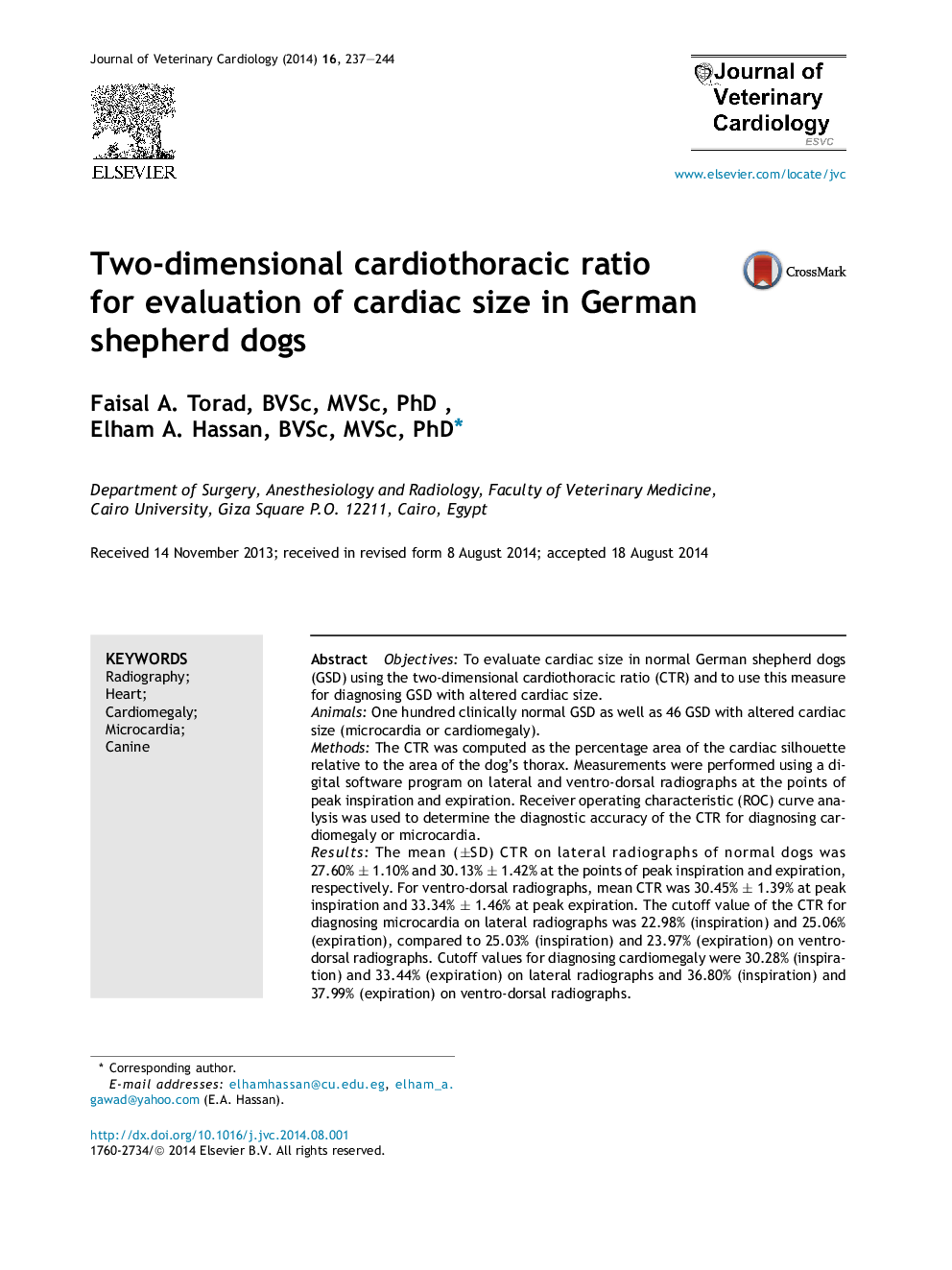| کد مقاله | کد نشریه | سال انتشار | مقاله انگلیسی | نسخه تمام متن |
|---|---|---|---|---|
| 2400059 | 1102073 | 2014 | 8 صفحه PDF | دانلود رایگان |
ObjectivesTo evaluate cardiac size in normal German shepherd dogs (GSD) using the two-dimensional cardiothoracic ratio (CTR) and to use this measure for diagnosing GSD with altered cardiac size.AnimalsOne hundred clinically normal GSD as well as 46 GSD with altered cardiac size (microcardia or cardiomegaly).MethodsThe CTR was computed as the percentage area of the cardiac silhouette relative to the area of the dog's thorax. Measurements were performed using a digital software program on lateral and ventro-dorsal radiographs at the points of peak inspiration and expiration. Receiver operating characteristic (ROC) curve analysis was used to determine the diagnostic accuracy of the CTR for diagnosing cardiomegaly or microcardia.ResultsThe mean (±SD) CTR on lateral radiographs of normal dogs was 27.60% ± 1.10% and 30.13% ± 1.42% at the points of peak inspiration and expiration, respectively. For ventro-dorsal radiographs, mean CTR was 30.45% ± 1.39% at peak inspiration and 33.34% ± 1.46% at peak expiration. The cutoff value of the CTR for diagnosing microcardia on lateral radiographs was 22.98% (inspiration) and 25.06% (expiration), compared to 25.03% (inspiration) and 23.97% (expiration) on ventro-dorsal radiographs. Cutoff values for diagnosing cardiomegaly were 30.28% (inspiration) and 33.44% (expiration) on lateral radiographs and 36.80% (inspiration) and 37.99% (expiration) on ventro-dorsal radiographs.ConclusionsCTR may provide a clinically useful tool for evaluating cardiac size in dogs.
Journal: Journal of Veterinary Cardiology - Volume 16, Issue 4, December 2014, Pages 237–244
